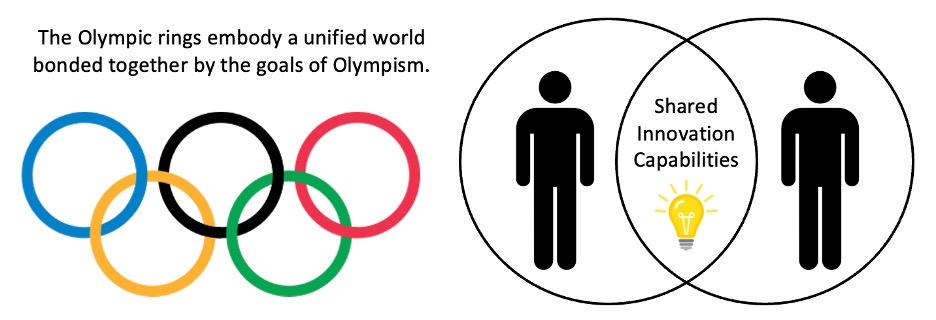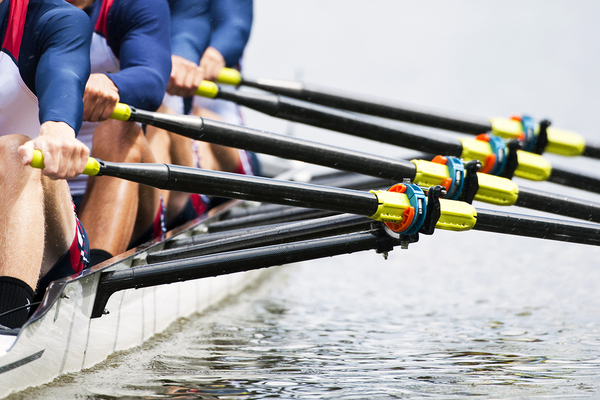The roar of the crowd, the flash of gold medals, the collective gasp of a near miss – the Olympic Games ignite a passion for human potential unlike any other event. But beyond the individual feats of strength, speed, and agility, the Olympic spirit whispers another powerful message: the magic that unfolds when diverse talents unite in pursuit of a shared goal. This spirit holds profound inspiration and guidance for anyone seeking to unlock the innovation potential within their team, department, or organization.
Imagine the Olympic Games without teams. Lone athletes vying for individual glory, devoid of the shared strategy, physical harmony, and intense camaraderie that fuels Olympic success. Unthinkable, right? Similarly, innovation in the modern world thrives on collaboration, not isolation. Just as Olympic teams rely on diverse skillsets and synchronized efforts to achieve victory, innovation teams need to foster a “can-do” culture of creativity, courage, and cooperation to unlock their full potential.
Beyond Individual Expertise: The Venn Diagram of Innovation Teamwork
“Alone, we can do so little; together, we can do so much.”
– Jackie Joyner-Kersee, USA Olympic gold medalist in track and field.
The Paris Olympics will showcase over 340 events, and 115 are team competitions. Think of your innovation team as an assorted squad of athletes, like those playing rugby, soccer, rowing, volleyball, field hockey, or water polo, coming together to achieve something extraordinary. Each member of your team possesses unique knowledge, skills, and experiences (technical, financial, industry, etc.). The expertise of these individuals can be visualized by circles in a Venn diagram. But the true magic happens in the overlapping area, where these circles intersect. This shared space symbolizes the team’s common innovation language, concepts, and practices.

A large overlap signifies a team united around a discipline of innovation that greatly enhances its ability to discover new insights, identify significant opportunities, and champion valuable business ideas together quickly and cheaply. Conversely, a small overlap indicates a limited potential for collaboration, akin to athletes from different sports struggling to understand the rules and support each other’s positions and tactics.
Take a moment to reflect on your team’s ability to leverage the overlap and use common practices to bring novel ideas to life. Answer these foundational questions about your team’s sharded innovation capabilities.
- Value Definition: Can your team clearly define the metrics that measure success for your innovation projects?
- Problem Identification: Can your team empathize with users and identify root causes of problems?
- Idea Generation: Can your team think creatively and build on each other’s ideas to develop high-potential solutions?
- Value Creation: Can your team turn initial insights and raw ideas into compelling value propositions?
- Persuasive Presentation: Can your team communicate with the necessary clarity and confidence to ensure the value of their ideas is understood by the audience?
- Experimentation: Can your team test hypotheses, build prototypes, and address areas of uncertainty to prove their ideas are valuable?
If your team struggles in these areas, consider implementing methods like CO-STAR to establish a discipline of innovation. By focusing on customer needs, business opportunities, clear solutions, and quantifiable results, CO-STAR helps teams achieve consensus on valuable ideas, develop them collaboratively, and present them in a compelling manner. This easy-to-learn method will help forge your crew to think and row in unison at an accelerated stroke rate toward approval, funding, and support for your winning ideas.
Using Quantification to Build Teams, Track Progress, and Inform Decisions
“Constant monitoring of what you are doing leads to improvement.”
– Carl Lewis, USA long jump champion and 9-time gold medalist
Just as Olympic coaches meticulously analyze the strengths and weaknesses of their players to optimize team performance, innovation leaders must understand the makeup and dynamics of their teams. Data from observations and a variety of assessments are used to evaluate mental and physical abilities and create personal as well as team development plans to fill in the gaps. By identifying each athlete’s or innovation team member’s unique profile, leaders can strategically allocate roles, responsibilities, and resources to maximize desired outcomes.
The Value in Strengthening and Spreading Shared Capabilities
“Talent wins games, but teamwork and intelligence win championships.”
– Michael Jordan, USA basketball legend and 2-time gold medalist
The Olympics are a giant laboratory for innovation, where diverse teams experiment and push boundaries with a relentless drive for improvement. Imagine if your organization could tap into this spirit, nurturing its own “innovation athletes” to produce operational breakthroughs and revenue-generating solutions continuously, not just once every 4 years. You and your team could become role models for collaboration and expand and nurture a powerful discipline across the innovation ecosystem in your organization. Leading this outreach and enrolling different perspectives can have a positive impact on careers, company culture, and profits. Remember, the greatest innovations often come from the most unexpected places, just like the upset victories that electrify the Olympic stage.
If you would like assistance transforming your team into a gold-medal contender through strategy consulting or CO-STAR training, don’t hesitate to contact me at Gyorffy@LBGinnovate.com. You or your colleagues might also be interested in taking a free innovation fitness survey to uncover your profile and gain insights into your innovation mindset and skill level.
Most Recent Posts
Explore the latest innovation insights and trends with our recent blog posts.













